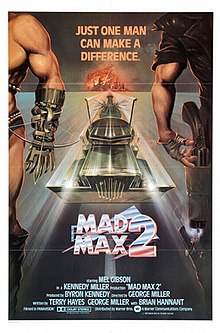
George Miller is an Australian filmmaker. He is best known for creating the Mad Max franchise, whose second and fourth installments, Mad Max 2 and Fury Road, have been hailed as two of the greatest action films of all time, with Fury Road winning six Academy Awards. Miller is very diverse in genre and style, having also directed the biographical medical drama Lorenzo's Oil, the dark fantasy The Witches of Eastwick, and the Academy Award-winning animated film Happy Feet, produced the family-friendly fantasy adventure Babe, and directed the sequel Babe: Pig in the City.
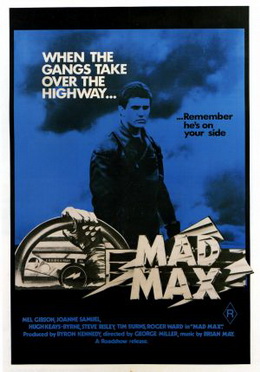
Mad Max is a 1979 Australian dystopian action film directed by George Miller, who co-wrote the screenplay with James McCausland, based on a story by Miller and Byron Kennedy. Mel Gibson stars as "Mad" Max Rockatansky, a police officer turned vigilante in a dystopian near-future Australia in the midst of societal collapse. Joanne Samuel, Hugh Keays-Byrne, Steve Bisley, Tim Burns and Roger Ward also appear in supporting roles.
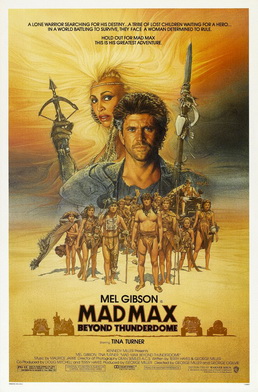
Mad Max Beyond Thunderdome, commonly known as Mad Max 3, is a 1985 Australian post-apocalyptic dystopian action film directed by George Miller and George Ogilvie and written by Terry Hayes and Miller. It is the third installment in the Mad Max franchise. The film stars Mel Gibson and Tina Turner, and follows a lone roving warrior who is exiled into the desert. It was Gibson's last performance as "Mad Max" Rockatansky.
Byron Eric Kennedy was an Australian film producer known for co-creating the Mad Max series of films with George Miller.

The Pursuit Special, also referred to as the Last of the V8 Interceptors, is the iconic black GT Falcon muscle car featuring a distinctive supercharger driven by the title character Mad Max during much of the Mad Max franchise, where it appears in Mad Max, Mad Max 2: The Road Warrior and in Mad Max: Fury Road, as well as both video games.

Max Rockatansky is the title character and antihero protagonist of the Australian post-apocalyptic action film series Mad Max. Created by director George Miller and producer Byron Kennedy, the character was played by actor Mel Gibson in the first three films from 1979 to 1985, by Tom Hardy in the fourth film in 2015, and by Jacob Tomuri in the fifth film in 2024.
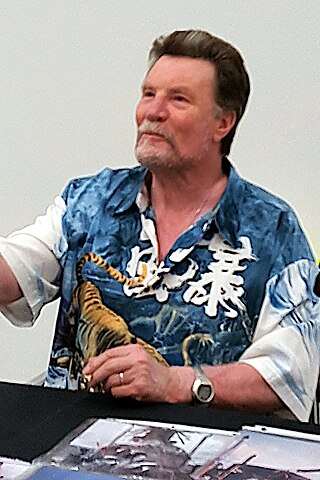
Vernon Wells is an Australian character actor. He began appearing on Australian television shows in the mid-1970s, such as Homicide, Matlock Police and All the Rivers Run. He is best known to international audiences for his role of Wez in the 1981 science fiction action film Mad Max 2: The Road Warrior and Bennett in the military action film Commando.
Dean Semler ACS ASC is an Australian cinematographer and film director. Over his career, he has worked as a cinematographer, camera operator, director, second unit director, and assistant director. He is a three-time recipient of the AACTA Award for Best Cinematography and an Academy Award winner. He is a member of both the Australian Cinematographers Society (ACS) and the American Society of Cinematographers (ASC). In 2002 he was appointed a Member of the Order of Australia (AM).
Kjell Nilsson is a Swedish olympic-class weight lifter and actor. His best known role is his 1981 portrayal of "Lord Humungus", the leader of the marauding wasteland gang in Mad Max 2.
Emil Minty is an Australian former child actor and jeweller.

Mad Max is a media franchise created by George Miller and Byron Kennedy. It centers on a series of post-apocalyptic and dystopian action films. The franchise began in 1979 with Mad Max, and was followed by three sequels: Mad Max 2, Mad Max Beyond Thunderdome (1985) and Mad Max: Fury Road (2015); Miller directed or co-directed all four films. Mel Gibson portrayed the title character Max Rockatansky in the first three films, while Tom Hardy portrayed the character in Mad Max: Fury Road.
The Mad Max series of films, which debuted in 1979, has had a significant impact on modern popular culture. Mad Max references are deeply embedded in popular culture; references to its dystopian, apocalyptic, and post-apocalyptic themes and bizarre landscape and desolate wasteland imagery have inspired some artists to emulate the look and feel of some aspect of the series in their work.
Kennedy Miller Mitchell is an Australian film, television and video game production house in Potts Point, Sydney, that has been producing television and film since 1978. It is responsible for some of Australia's best-known and most successful films, including the four Mad Max films, the two Babe films, and the two Happy Feet films.
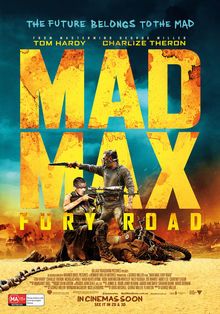
Mad Max: Fury Road is a 2015 Australian post-apocalyptic action film co-written, co-produced, and directed by George Miller. Miller collaborated with Brendan McCarthy and Nico Lathouris on the screenplay. The fourth instalment in the Mad Max franchise, it was produced by Village Roadshow Pictures, RatPac-Dune Entertainment and Kennedy Miller Mitchell, and distributed by Roadshow Entertainment in Australia and by Warner Bros. Pictures internationally. The film stars Tom Hardy and Charlize Theron, with Nicholas Hoult, Hugh Keays-Byrne, Rosie Huntington-Whiteley, Riley Keough, Zoë Kravitz, Abbey Lee, and Courtney Eaton in supporting roles. Set in a post-apocalyptic desert wasteland where petrol and water are scarce commodities, Fury Road follows Max Rockatansky (Hardy), who joins forces with Imperator Furiosa (Theron) against cult leader Immortan Joe (Keays-Byrne) and his army, leading to a lengthy road battle.

Mad Max is an action-adventure video game developed by Avalanche Studios and published by Warner Bros. Interactive Entertainment. Based on the Mad Max franchise, it was released for PlayStation 4, Windows, and Xbox One in 2015. Feral Interactive published the game's Linux and macOS versions. In the game, players control Max Rockatansky as he progresses through the wasteland building a vehicle, the "Magnum Opus", to do battle with a gang of raiders, led by Scabrous Scrotus, and to reach the storied "Plains of Silence", where he hopes to find peace. Mad Max emphasizes vehicular combat, in which players can use weapon and armor upgrades on their car to fight enemies. It is set in an open post-apocalyptic wasteland consisting of deserts, canyons, and caves.

Mad Max 2 (Original Motion Picture Soundtrack) is a soundtrack album for the 1981 film Mad Max 2, composed by Brian May. It was released on vinyl in the United States in 1982 by Varèse Sarabande, followed by a CD release on 25 October 1990.

Margaret Sixel is an Australian and South African film editor. She is best known for her work as editor on her husband George Miller's films, including Babe: Pig in the City (1998), Happy Feet (2006), and Mad Max: Fury Road (2015). For Fury Road, she won the Academy Award for Best Film Editing and the BAFTA Award for Best Editing.
Colin Gibson is an Australian production designer. He is known for his collaborations with George Miller, including Babe, Babe 2: Pig in the City, Happy Feet, Happy Feet Two, and Mad Max: Fury Road, the latter of which resulted in winning the Academy Award for Best Production Design and an AACTA Award. Gibson's other work includes The Adventures of Priscilla, Queen of the Desert, for which he shared a BAFTA award nomination with Owen Paterson.
Lesley Vanderwalt is a New Zealand cinematic hair designer and makeup artist. Vanderwalt was raised and began her career in New Zealand before moving to Australia. She has frequently collaborated with directors such as George Miller and Baz Luhrmann.
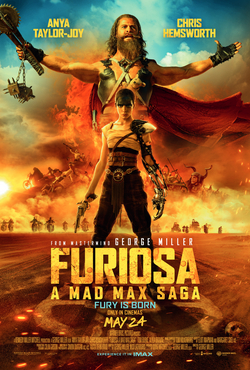
Furiosa: A Mad Max Saga is a 2024 Australian post-apocalyptic action adventure film directed, co-written, and co-produced by George Miller, who collaborated with Nico Lathouris on the screenplay. The fifth installment in the Mad Max franchise, Furiosa serves as both a spin-off and prequel to Mad Max: Fury Road (2015), focusing on the character Imperator Furiosa, originally portrayed by Charlize Theron in Fury Road.
